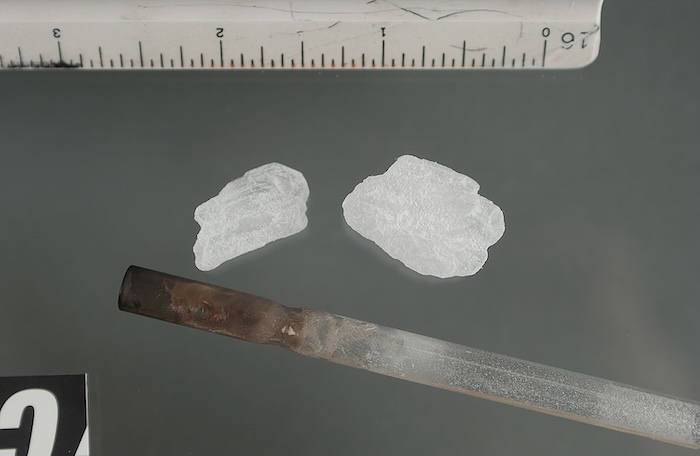Crank drug, a street name for methamphetamine, is more than just a reference in popular culture. It is one of the most dangerous drugs available today. On a global scale, many people suffer from this drug with overdose, and abuse of crank can be fatal. This drug, often glamorized in media, is far more dangerous and widespread than many realize.
What does Crank drug look like?
Crank can be in various colors such as green, yellow, pink, and blue, due to its crystalline nature. This form of the drug is often referred to by names like shiny, quartz, or rock salt.
At the clubs crank is capsulated and sold. There’s also a less common variant of crank known as liquid crank, which has the appearance of a dark yellow syrup.
Crank drug vs Meth
Meth and Crank drug both refer to methamphetamine. Crank often implies lower purity, possibly mixed with other substances, and might be in powder form. Meth is a broader term that can include higher-purity forms like crystal meth, which is typically smoked. Both are highly addictive and dangerous, causing serious health risks.
What Exactly is Crank Drug?
Crank, or methamphetamine, is a drug notorious for its high potency and addictive potential. It’s a substance that quickly leads to addiction affecting across all age groups. Despite the recent focus on the opioid crisis, crank remains a significant threat, often overshadowed in media coverage yet equally potent and dangerous.
Methamphetamine’s addictive potential is so high that it’s often compared to some of the most addictive substances known. The drug’s effects are not only immediate but also long-lasting, leading to severe health and social consequences. Crank stimulates the central nervous system, giving a boost to alertness, energy, and a feeling of euphoria. But these effects pose serious risks to both mental and physical health. If you or a loved one battling with crank addiction, Still Detox is here to help you. We have a dedicated team that understands the intense struggle of addiction, both physically and mentally. Our personalized detox program is designed for safe and managed withdrawal.
Long-term use of Crank Drug
When someone uses crank drug for long mental health disorders, cardiovascular problems, and neurological damage will start to appear. The addictive nature of crank makes it challenging to quit, with users often experiencing intense cravings and withdrawal symptoms. The drug’s ability to alter behavior and judgment can lead to a host of social problems, including crime, unemployment, and family breakdown. We should fight crank drug addiction with an all-around strategy that covers prevention, treatment, and ongoing support for those impacted. The key to fighting this epidemic effectively lies in understanding crank’s nature and its impact on individuals.
Nicknames, Street names of Crank
Also called speed or the poor man’s cocaine, crank’s effect on the central nervous system makes it one of the most lethal synthetic addictive substances.
These street names often reflect the appearance, effects, or origins of the drug.
- Meth – Short for methamphetamine, this is one of the most common street names.
- Crystal or Crystal Meth – Refers to the crystalline form of methamphetamine.
- Ice – Another reference to the crystal-like appearance of the drug.
- Glass – Similar to ‘Ice’, this name is derived from the drug’s glassy, crystalline appearance.
- Speed – Indicates the stimulant effects of the drug, which increase alertness and energy.
- Tina – A slang term that is sometimes used, particularly in certain subcultures.
- Chalk – Refers to the powdered form of methamphetamine.
- Go-Fast – Another term that highlights the stimulant and energizing effects of the drug.
- Shards – Describes the shard-like appearance of crystal meth.
- Yaba – A term used in Asia, particularly in Thailand, meaning “crazy medicine.”
- Trash – A term that sometimes refers to lower quality or impure methamphetamine.
- Tweak – Refers to both the drug and the behavior of users who may exhibit nervous or paranoid actions.
- Biker’s Coffee – An older term, reflecting the drug’s popularity among biker groups.
- Chicken Feed – Another less common street name for methamphetamine.

How Is Crank Made?
Crank, or methamphetamine, is synthesized through a complex chemical process that often takes place in clandestine laboratories. The production of crank involves the use of pseudoephedrine or ephedrine, commonly found in cold and allergy medications. These substances are chemically altered through a reduction process, typically involving hazardous chemicals like anhydrous ammonia, red phosphorus, and lithium. The makeshift nature of these labs and the volatile chemicals used pose significant risks, including explosions and toxic fume emissions.
The process of making crank is not only dangerous to those producing it but also to the surrounding environment, as it contaminates the area with toxic waste. The variability in the production process means that the potency and purity of street crank can vary greatly, making it an unpredictable and dangerous drug. The illegal nature of these labs means they often operate under the radar, making it challenging for law enforcement to shut them down. The production of crank is a global issue, with labs found in various countries, contributing to the widespread availability of the drug.
How Crank Drug Works?
Crank drug works by stimulating the central nervous system, leading to increased levels of dopamine, a neurotransmitter associated with pleasure and reward. When ingested, crank causes the brain to release high levels of dopamine, creating a sense of euphoria and heightened energy. This intense rush is what makes crank drug highly addictive, as users seek to replicate the euphoric experience. The drug also affects other neurotransmitters like serotonin and norepinephrine, contributing to its stimulant effects.
The increased release of these neurotransmitters leads to heightened alertness, increased concentration, and a feeling of invincibility. However, these effects are short-lived, and as the drug wears off, users often experience a severe crash, leading to feelings of depression and lethargy. Using crank drug repeatedly can result in tolerance, meaning you’ll need larger doses to feel the same effects. This escalates the risk of overdosing. Long-term use of crank drug can cause significant changes in brain function, affecting areas involved in decision-making, memory, and emotion. These changes can lead to long-lasting psychological and cognitive issues, including addiction,
anxiety disorders, and psychosis.
How Do People Abuse Crank?
These methods of consumption are often chosen based on the desired intensity and speed of the drug’s effects.
Here are 5 common ways crank drug is consumed:
- Smoking: One of the most common methods, smoking crank involves heating the crystalline drug and inhaling the vapors. This method allows for rapid absorption into the bloodstream through the lungs, leading to almost immediate effects. Users often smoke crank using a glass pipe.
- Snorting: This involves inhaling crank powder through the nose where it gets absorbed into the bloodstream through the nasal mucous membranes. Snorting produces effects more slowly than smoking but faster than ingestion.
- Injection: Users dissolve crank in water and inject it directly into the bloodstream. This method produces the most intense and immediate effects, as the drug reaches the brain quickly. However, it also carries the highest risk, including the risk of transmitting diseases through shared needles.
- Oral Ingestion: Crank can be swallowed in pill form or as a powder. This method produces a slower onset of effects as the drug has to pass through the digestive system before entering the bloodstream.
- Ingestion in Capsule Form: Sometimes, crank is stuffed into small capsules, which are then swallowed. This method is similar to oral ingestion and is preferred in some settings for its discretion and ease of use.
Crank Drug Abuse: Symptoms and Dangers
Symptoms of crank abuse include extreme weight loss, dental problems (often referred to as meth mouth), skin sores, and erratic, aggressive behavior.
Users may experience insomnia, hyperactivity, and talkativeness. Long-term abuse of crank can lead to severe mental health issues, including paranoia, hallucinations, and delusions, often referred to as meth psychosis.
The physical dangers of crank abuse include an increased risk of heart attack, stroke, and liver damage. The drug’s impact on the cardiovascular system can lead to irregular heartbeats and hypertension.
The immune system gets under a lot of stress, making users more susceptible to infections and illnesses. Crank also affects judgment and inhibition can lead to risky behaviors, including unsafe sex and criminal activities.
Crank Drug Withdrawal Symptoms
Withdrawal from crank can be a challenging and uncomfortable process. Symptoms typically begin within a few hours to days after the last use and can last for several weeks. Common withdrawal symptoms include fatigue, increased appetite, and depression. Users may experience intense cravings for the drug, making it difficult to cope with the feigning by themselves. Other symptoms include anxiety, agitation, and sleep disturbances, including vivid, unpleasant dreams. In severe cases, individuals may experience psychotic symptoms, such as paranoia and hallucinations.
The psychological withdrawal symptoms can be particularly challenging, often leading to relapse. Withdrawal from crank drug is not typically life-threatening, but it can be emotionally and physically distressing. At Still Detox; under medical supervision during the withdrawal process we provide support and reduce the risk of relapse. Treatment for crank withdrawal may include medications to manage symptoms, counseling, and support groups. We believe a comprehensive approach to treatment, addressing both the physical and psychological aspects of addiction, is essential for successful recovery.
Crank Drug Use in United States
In recent years, particularly in 2021, the United States has seen a disturbing rise in methamphetamine use, with nearly 2.5 million people reported using the drug. The year 2020 marked a dark milestone in drug-related fatalities, with over 93,000 Americans dying from drug overdoses. This alarming number is largely driven by the abuse of synthetic opioids and methamphetamine, highlighting the severity of the crisis. The alarming rise in methamphetamine-related deaths is a real reminder of how this drug is lethal. Tackling this epidemic calls for a comprehensive strategy that includes education, prevention, and treatment. It’s important to understand and address the underlying reasons for addiction and to offer effective rehab programs to help reverse this troubling trend.
The Global Impact of Crank Drug Addiction
Drug trafficking networks have been instrumental in spreading methamphetamine across continents, leading to widespread abuse. This global distribution underscores the increasing demand for methamphetamine and the challenges of combating its spread. The international trade has made it readily available in many countries, contributing to its growing popularity.







